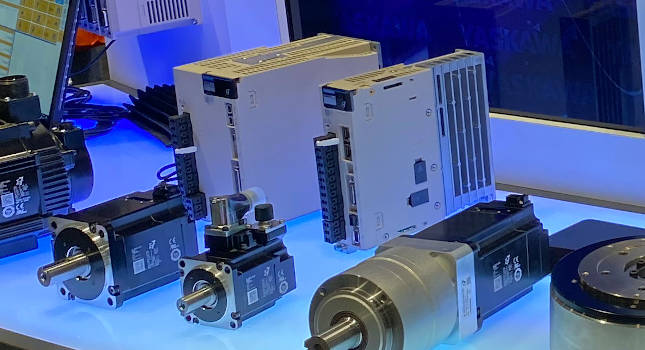Machine control migration goals and risks
Upgrading control systems can be a fraught process and there are many things users need to consider. Seven questions are highlighted.
Learning Objectives
- Upgrading legacy control systems is a challenging process for users and comes with many risks.
- Users should ask whether there are long-term benefits to upgrading a machine control system.
- If so, benefits include an improved overall process and extended machine life.
Legacy systems tend to suffer from various challenges like obsolete components, failing to meet modern safety standards, cybersecurity risks, skills gap and hence poor contributions towards a company’s business needs.
Not upgrading a legacy system can lead to many risks including:
- Critical components being obsolete
- Failing to meet modern safety codes
- Cybersecurity risks
- Growing legacy software skills gap
- Ending support on legacy control systems
- Data silos due to legacy communication protocols
- Remote monitoring not possible.
Seven questions to ask during upgrade
Generic risks extend beyond the list above, specific to the machine’s application. Following are some questions that you may want to ask prior to starting a machine controls upgrade.
1. Are we upgrading critical components that are obsolete or will be obsolete soon?
Users need to find out if any safety controllers, relays or other safety components are outdated. How old are the programmable logic controllers (PLCs) and human-machine interfaces (HMIs)? Are there any PCs running that may need critical software?
After the control system upgrade, look at the big picture look and ask whether or not the associated mechanical and electrical components can sustain the efficient operation of the machine until the system upgrade.
2. Are we closing an organization’s skills gap by upgrading the machine controls?
Users need to consider whether or not replacing a legacy component with the latest one be beneficial to close the “skills gap” within a manufacturing team. Is there a digital version of a hardware component like a proportional-integral-derivative (PID) controller, temperature controller, etc., that can be implemented in software? Is the update helping with removing any tribal knowledge for a component that required “special care” over the years?
3. How to reduce downtime required for upgrade?
Downtime of running systems usually is one of the most expensive things during an upgrade. However, with careful planning, downtime can be minimized to reap the benefits of an upgrade. Users need to know what component of the controls requires replacement and if the control engineer has narrowed down the number of steps required for the upgrade. Users also need to know how much downtime is needed during the upgrade and the cost-benefit analysis. They also need to know if the remaining life of the machine less than the lifecycle obsolescence of components. Considering other risks, not upgrading the system may be an acceptable option.
4. Does the machine comply with modern safety standards?
Users need to know whether or not the upgrade mitigates legal liability issues for any past or future safety audits for not meeting modern safety standards. Does integration of the latest technologies like a robot require upgrading legacy safety components as a part of the safety system (SRP/CS)? If needed, users should work with an external machine safety partner if the manufacturing team does not possess expertise in safety assessment for upgrading legacy systems.
5. Are there cybersecurity risks due to obsolete hardware or software?
Users need to know if there are any systems running operating systems or application software that are no longer supported by their manufacturers. With legacy devices, users need to know if the network communication protocols are secure. Users should also ask if upgrades to obsolete standards require an upgrade to legacy hardware.
6. Will upgrades lead to improvements in machine efficiency?
When upgrading, be mindful of if incremental hardware and software improvements over the life of the machine become too unwieldy to manage. It’s also worth considering if upgrades will reduce downtime and improve data accessibility. Also ask if remote monitoring and debugging can help improve the overall effectiveness and availability of the equipment.
7. Will there be significant energy savings due to upgrades?
Will replacing endpoints like PLCs, remote terminal units (RTUs) or PCs provide the advantage of the newest energy-saving hardware and algorithms? Also ask if the facility temperature, humidity, and air supply infrastructure use energy efficient controls that monitor consumption.
Six additional benefits for users
After resolving primarily upgrade issues, significant secondary benefits may be available that users may not recognize.
- Upgrading machine controls often leads to improving the overall process as well.
- One of the most significant benefits of upgrading to the latest controls is valuable data being accessible related to processes and equipment.
- Upgrading critical components, like PLCs, PCs, etc., may extend the life of the machine, offering future-proofing for cybersecurity and upcoming patches.
- Critical component upgrades also allows easier troubleshooting with modern debugging tools that may not be available on old PLCs, PCs, network equipment, etc.
- Users may be able to bring old equipment to the same standard as the other equipment in a facility. This reduces maintenance and troubleshooting costs.
- An upgrade also gives users a chance to improve documentation that may have not been updated during incremental improvements over the years.
Pratul Singh is senior controls engineer, Masimo. Edited by Chris Vavra, web content manager, Control Engineering, CFE Media and Technology, cvavra@cfemedia.com.
MORE ANSWERS
Keywords: machine control migration, cybersecurity
CONSIDER THIS
What are the biggest concerns you have when upgrading a control system? Do they exceed risks of not upgrading?
Do you have experience and expertise with the topics mentioned in this content? You should consider contributing to our CFE Media editorial team and getting the recognition you and your company deserve. Click here to start this process.



